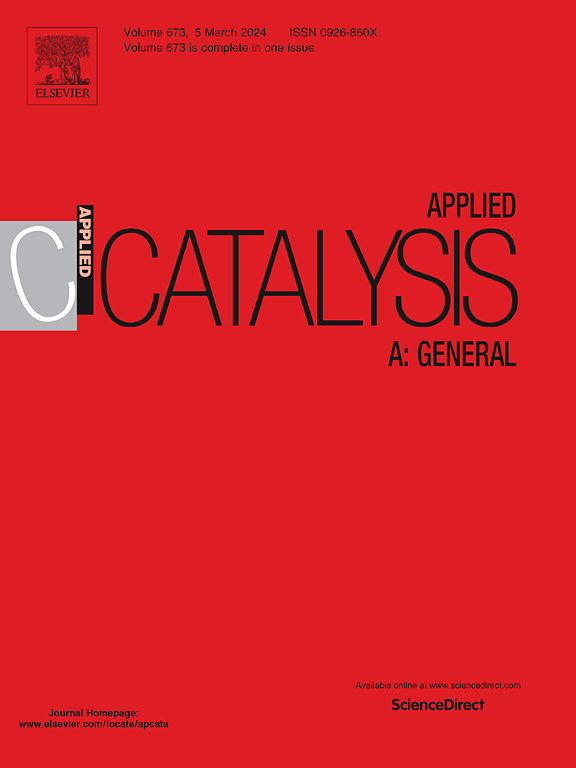磁控溅射沉积法优化FeMnOx双金属助催化剂在掺锌BiVO4上光催化水氧化
IF 4.7
2区 化学
Q2 CHEMISTRY, PHYSICAL
引用次数: 0
摘要
钒酸铋(BiVO4)是一种高效的水氧化光催化剂。然而,原始BiVO4由于其空穴扩散长度短,电子-空穴复合速度快,容易发生复合,阻碍了光催化水氧化。为了增强水的光氧化能力,我们构建了掺杂锌的BiVO4,然后通过磁控溅射在其表面沉积了双金属FeMnOx。锌掺杂通过红移BiVO4的带隙改善了BiVO4的光学吸收。在晶体结构上,它增加了向(040)方向的生长,增加了V-O键的长度。此外,EPR分析证实,锌掺杂诱导氧空位抑制电荷复合。与纯BiVO4 (90 μmol)相比,zn掺杂的BiVO4在135 μmol的光催化O2演化中表现出令人难以置信的增强。在BiVO4上加载双金属FeMnOx助催化剂后,O2的析出量进一步提高到154µmol,这是由于助催化剂改善了BiVO4表面的电荷传输。本文章由计算机程序翻译,如有差异,请以英文原文为准。
Optimizing photocatalytic water oxidation by FeMnOx bimetallic cocatalyst on Zn-doped BiVO4 via magnetron sputter deposition
Bismuth vanadate (BiVO4) has been used as an efficient photocatalyst for water oxidation. However, pristine BiVO4 suffers from recombination due to its short hole diffusion length and fast electron-hole recombination, which hinders photocatalytic water oxidation. To enhance the water photo-oxidation, here we constructed Zn-doped BiVO4 and then deposited bimetallic FeMnOx on its surface via Magnetron Sputtering. Zn doping improved the optical absorption by red-shifting the bandgap of BiVO4. Crystalloghafically, it increased growth towards (040) direction and enhanced V-O bond lengths. Moreover, the Zn doping induces oxygen vacancies that suppress charge recombination, as confirmed by EPR analysis. Zn-doped BiVO4 showed an incredible enhancement in the photocatalytic O2 evolution of 135 μmol as compared to the pure BiVO4 (90 μmol). The O2 evolution was further enhanced to 154 µmol after loading bimetallic FeMnOx cocatalysts on Zn-doped BiVO4, which is attributed to the improved charge transportation via cocatalysts from the BiVO4 surface.
求助全文
通过发布文献求助,成功后即可免费获取论文全文。
去求助
来源期刊

Applied Catalysis A: General
化学-环境科学
CiteScore
9.00
自引率
5.50%
发文量
415
审稿时长
24 days
期刊介绍:
Applied Catalysis A: General publishes original papers on all aspects of catalysis of basic and practical interest to chemical scientists in both industrial and academic fields, with an emphasis onnew understanding of catalysts and catalytic reactions, new catalytic materials, new techniques, and new processes, especially those that have potential practical implications.
Papers that report results of a thorough study or optimization of systems or processes that are well understood, widely studied, or minor variations of known ones are discouraged. Authors should include statements in a separate section "Justification for Publication" of how the manuscript fits the scope of the journal in the cover letter to the editors. Submissions without such justification will be rejected without review.
 求助内容:
求助内容: 应助结果提醒方式:
应助结果提醒方式:


